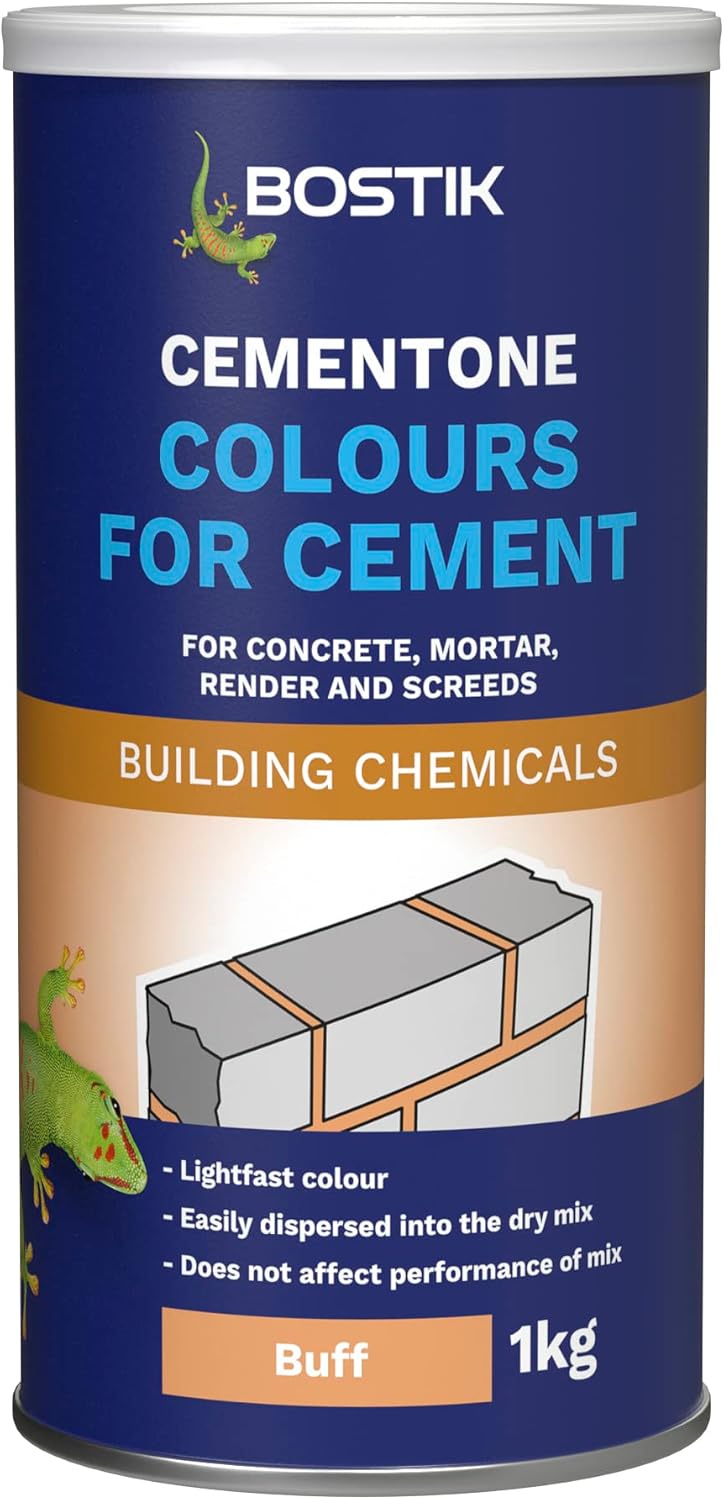
Bostik Colours for Cement, For Concrete, Mortar, Render and Screeds, Available in 5 Intermixable Colours, For Interior and Exterior Use, Colour: Buff, Size: 1kg
FREE Shipping
Bostik Colours for Cement, For Concrete, Mortar, Render and Screeds, Available in 5 Intermixable Colours, For Interior and Exterior Use, Colour: Buff, Size: 1kg
- Brand: Unbranded

Description
If you are working with lime then you will also need to do the same, but with lime you will only be working with ratios between 3:1 (3 sand to 1 lime) and 5:1 (5 sand to 1 lime).
In short, yes, the colour of the cement that used in a mortar mix does have an effect on its overall colour. In some cases it is possible to take a sample of the original mortar, break it down and separate out the sand. With a sample of the original sand to hand you can then use it to compare against sand from different sources until you find an exact or very close match. Step 1 – Get SamplesDifferent types and colours of sand – Image courtesy of sandatlas.org Does the Colour of the Cement Matter? With your sample to hand place them on an old scrap piece of wood. Using a similar scrap piece of wood, place this on top and use it to grind the mortar down.
Or if you’re looking for versatile, multi-purpose additives that can do it all, we’ve got some great products including the Sealorend Waterproofer, Retarder and Plasticiser that is especially handy when working with larger areas, as well as the SBR Admixture which serves as a bonding agent, sealer, primer and waterproofer in one. Final specifications?If further advice is required, one of our Mortar Specialists can visit with our Mortar Colour Selector to assist in finding an appropriate match. Call our Mortar Helpline on 0800 667 827 for more details. While waiting for your test mixes to dry you can still do some preliminary tests by giving a section of your existing mortar a good soaking with some water. This should then reflect the damp drying state of your test mixesPlace the sand on an old sheet/cloth and leave it somewhere out of the way to fully dry off. Once dry, pop it into a clear sealed jar or container. Step 7 – Match the Sample Essentially, there is no science involved in matching a sand and cement mix to that of your existing wall or property, it’s really just a question of trial and error and also possibly a little research. Lime mortar has been pretty much the go-to choice for building and construction for thousands of years but was replaced by more modern cement mortars due to their faster setting times and greater compressive strength towards the end of the 19th century.
Now that we have established the probable types of sand and cement or lime that was used for the original mortar mix, all that remains is to match the correct cement content.After you have created each mix, take a sample and place it on a scrap piece of wood. Do this for each mix until you have a long line of samples. Label each mix e.g. 3:1, 4:1 etc. so you know which is which and then leave them to fully dry. If you have read through all of the above information you should be fairly well versed in what’s involved in colour matching mortar and also be wise to the fact that it can be quite a long drawn out affair, but if you want the best finish, then sometimes you’ve just got to be prepared to work for it. It’s no coincidence that both the colour of most standard mortars and cement is a grey’ish colour. This is due to the fact that the grey colour-tones of the cement go a fair way into the overall colour of the mortar. Essentially, this is down to the colour and type of sand that’s used. There are many types of sand and each type will produce a different colour mortar when mixed with cement.
With your solution prepared, pour in the course dust that you created earlier and stir it around to mix it up fully. Step 4 – Wait for Results Essentially you have to repeat the above process e.g. creating several different mixes but adding the required dye or tone colour in different quantities until you have a decent colour match. If it helps, I am looking for the sandy colour that this chap was able to get in his "this is how it turned out" picture (but funnily enough he wanted more grey!): The key to this whole process is consistency with the mix ratio. If you have a lot of pointing or repair work to do then to maintain a consistent colour match from your first mix to your last, everyone has to be the same. Matching mortar colours is often required with older, period properties where repairs that are carried out need to be made invisible.Once your new mortar has dried it will change colour very slightly. This may be even more evident over a large area
- Fruugo ID: 258392218-563234582
- EAN: 764486781913
-
Sold by: Fruugo
